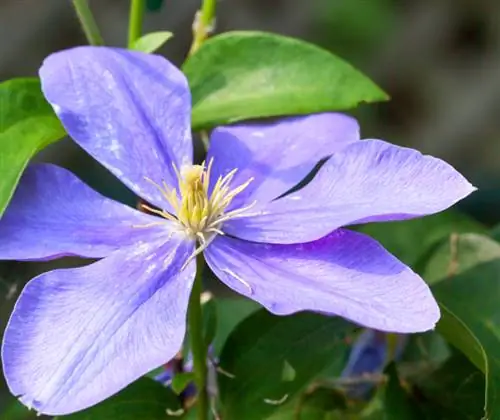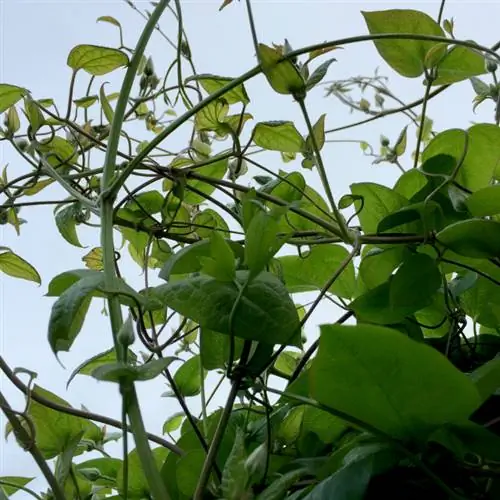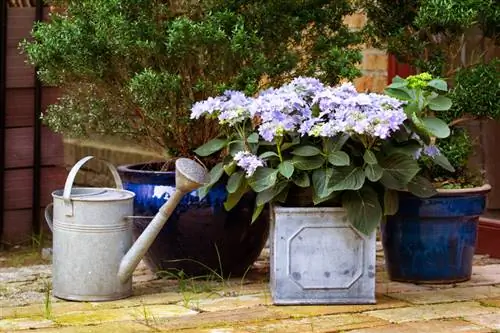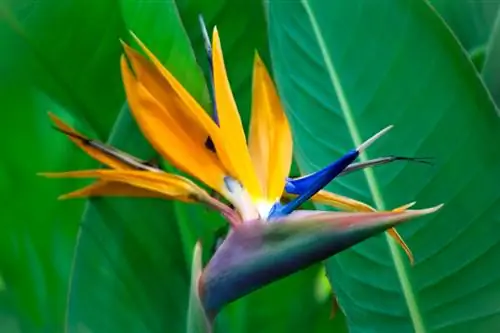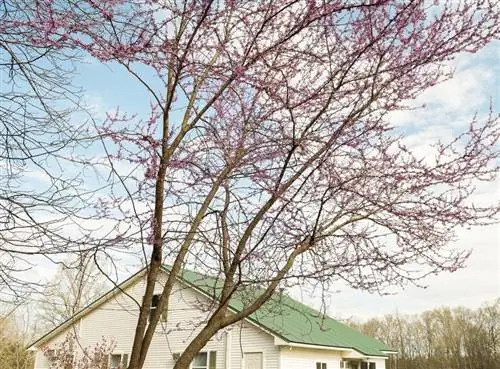- Author admin [email protected].
- Public 2023-12-16 16:46.
- Last modified 2025-01-23 11:20.
The clematis was planted with great enthusiasm. Instead of showing the proverbial growth, the clematis does not grow. Dedicated research into the triggers is now required. You can read the most common causes here.
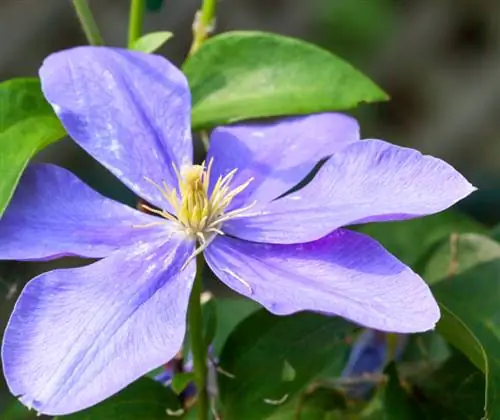
Why isn't my clematis growing?
If a clematis does not grow, causes such as naturally slow growth, lack of nutrients, waterlogging or inhibited growth after the first flowering may be responsible. Balanced fertilization and good drainage can support growth.
Cause 1: Naturally slow growth
The large-flowered hybrids like to take things slowly. After planting, first concentrate on strong root formation before starting longitudinal growth. This is particularly true for small species and varieties that are suitable for cultivation in containers. The clematis 'Königskind' is one of them, as is the delicate clematis 'Mrs. George Jackmann'.
Cause No. 2: The clematis is starving
In order for a clematis to develop its enormous biomass, it requires a balanced supply of nutrients right from the start. Correct fertilization therefore plays an important role in professional care. How to handle it correctly:
- When planting, add a generous portion of compost and horn shavings to the planting hole
- Use a high-quality, pre-fertilized substrate for planters
- Provide clematis in the garden every 6 weeks from March to September with special clematis fertilizer
- Alternatively, fertilize every 8 days alternately with compost and potassium-rich comfrey manure
These species reduce growth after the first flowering
Some of the most popular species and varieties grow rapidly in height in the first two years. After the first flower appeared in the third year, the following clematis almost completely stopped growing in length:
- Clematis alpina and all varieties of Alpine clematis
- Clematis macropetala including all descendants
- Clematis koreana with varieties such as 'Dusky', 'Pointy' or 'Brunette'
This broad family branch within the Clematis is summarized under the name Clematis alassene. When buying a clematis, pay attention to the botanical name in order to draw conclusions about its growth behavior.
Waterlogging stops all growth
Every clematis stops growing in waterlogged soil. To prevent this from happening in the first place, experienced hobby gardeners always create a drainage system made of gravel or chippings in the planting hole. Sensitive species, such as Clematis alpina, should also be planted slightly elevated so that rain and irrigation water drain away better.
Tips & Tricks
Late summer is not automatically the best time to plant clematis. Spring is the ideal time for planting pots and balcony boxes. The warm spring sun warms up planters quickly so that the clematis takes root vitally and thrives splendidly.

